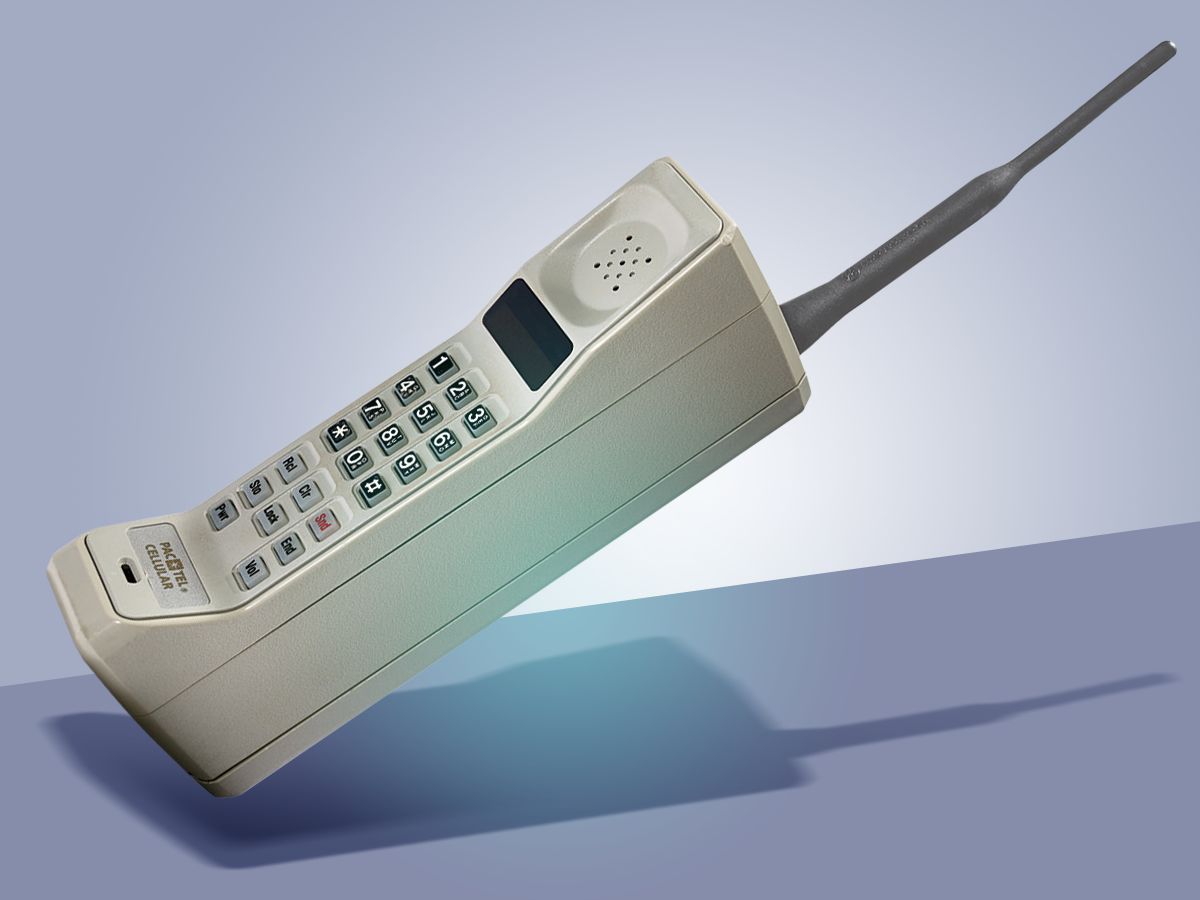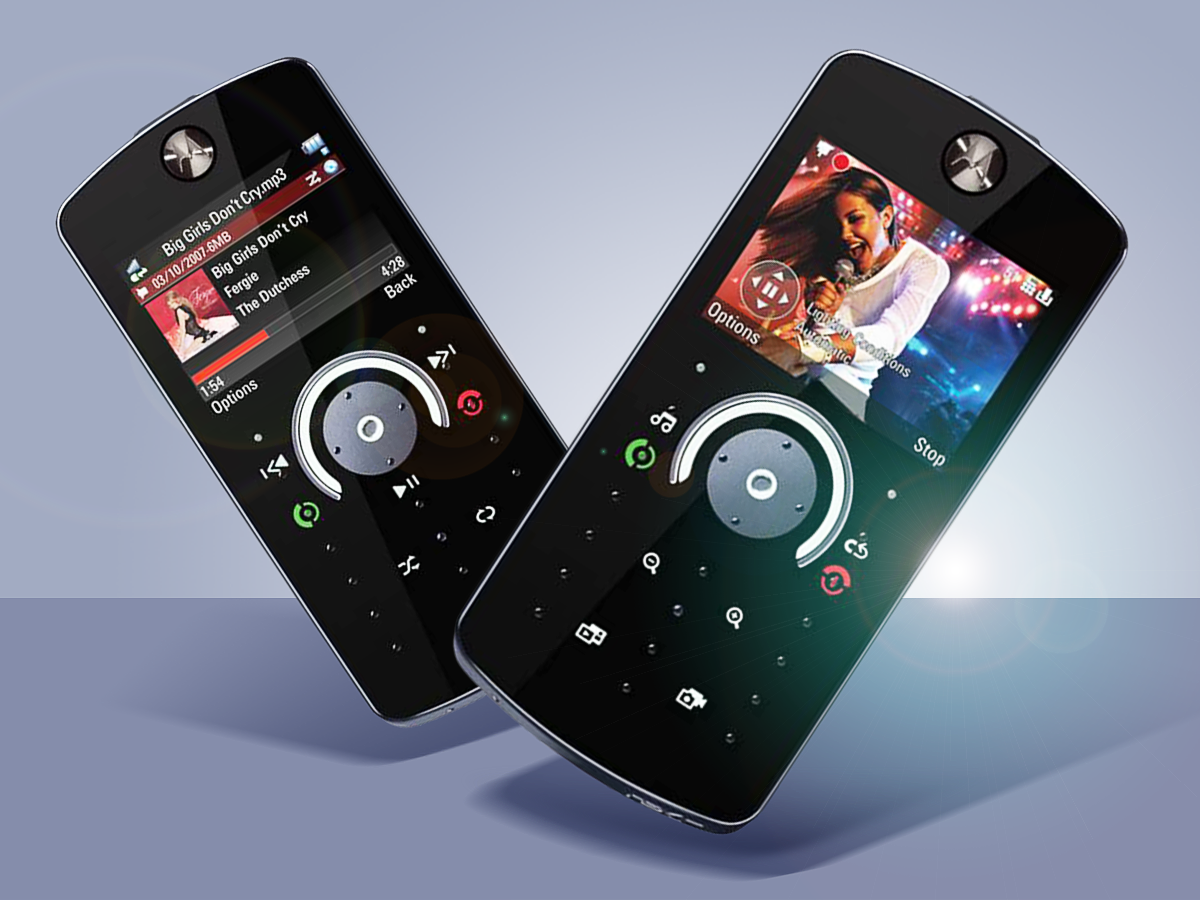Classic Motorola Phones that rocked the tech world
From hellrazrs to rokrs, these are the handsets that would shape mobile phone history

When people look back at the pre-smartphone era with their rose-tinted specs, Nokia tends to be the first name that jumps out at them.
We’ve taken a look back at the Finnish mobile giant’s past accomplishments elsewhere, but it’s not the only company that helped pave the way for the phones we’re all so addicted to today. HTC gave it a good go before being absorbed into Google’s hardware division, and Huawei made massive strides from China into the wider world before a US trade embargo severely restricted its appeal to western audiences. But it was Motorola that made more than its fair share of contributions to the mobile phone world, at times pioneering and innovating its way well ahead of the competition.
This is a tribute to those Moto phones of yesteryear that made waves for looking mental, pushing the boundaries or, in some cases, were just ahead of their time. Hello Moto:
Motorola DynaTAC 8000x (1984)

The DynaTAC – or as we like to call it, the Zack Morris phone – launched with a whopping US$4000 price tag, which is the equivalent of around US$9265 today.
So why the expense? Well, it was essentially the world’s first truly portable mobile phone, having shed the weight of its bulky carphone ancestors. When it comes to classic motorola phones, we might as well start at the beginning.
Dubbed the brick phone, its antenna alone measured 20cm which, combined with its 8cm width and 784g weight, made pockets a definite no-go zone. Its 10 hour charge time and 30 minutes of talk time sound laughable today too, but there’s no questioning its role and importance in ushering the era of portable chatter boxes. A true tech icon in every sense of the word.
Motorola MicroTAC (1989)

The MicroTAC made headlines across the world when it landed five years after Moto’s original grey brick, mostly due to the fact that it was the smallest and lightest mobile phone in the world at that time.
The MicroTAC single-handedly inspired the later clamshell phone design, and could just about slip into regular pockets with relative ease. It also featured a red 8-character dot matrix display, along with a built-in phonebook. A veritable steal for US$2500, it was an icon that became the picture of classic motorola phones many children of the 80s had in their heads.
Motorola StarTAC (1996)

This right here, is where Motorola really made its mark on the tech world.
At a ‘more affordable’ US$1000, the Star Trek communicator-like StarTAC was veritably microscopic compared to its predecessors, weighing just 88g, with an innovative clamshell design which inspired phone designs for years to come.
It even had the ability to vibrate, and later models could even send SMS messages. With 60 million StarTACs sold, it was the iPod of its generation.
Motorola V70 (2002)

Fast forward six years, and we’ve got a handset that was bonkers even by Nokia’s standards – the world’s first phone with a circular display – long before the very first Moto 360 smartwatch rocked up with its almost-circular screen.
The V70 was a phone bought for its design and design alone, with a sideways flick swinging the front cover around to reveal the keypad beneath. There weren’t many in the wild, but it would go on to inspire a newer, luxury version in the Aura, six years later.
Motorola Razr (2004)

The two-screened RAZR V3 was a work of mobile art, with a staggeringly slim – for the time – 13.9mm body. Like the original StarTAC before it, the V3 was one of the most enduring handsets of its time, and embodied the very definition of gadget lust.
Sadly, for every wolf whistle it gained for its breathtaking looks, it provoked just as many groans due to its terrible interface. Still, its design alone has earned it a place in the history books.
Motorola Pebl (2005)

Named for obvious reasons, the all-metal Pebl was a joy to hold, and its magnetic spring mechanism resulted in a satisfying opening and closing action each and every time. Mmmmm, closing action.
In a way, its outer shell’s clock was a precursor to LG and Samsung’s modern always-on screen found in the likes of the LG G5 and Samsung Galaxy S7. Or at least that’s what a Motorola spin doctor would like to think.
Motorola Rokr E1 (2005)

In a way, the original Rokr was the very first iPhone. It was the first mobile phone to ever offer iTunes support – two years before the debut of the original iPhone.
You might remember it more for its high profile TV ad which saw Madonna and a bunch of other artists cram themselves into a phone booth.
While it seemed like a decent music phone on paper thanks to its iTunes support, its slow transfer times and 100 track limit held it back from being a smash hit. Still, out iPhone-ing the iPhone deserves recognition, don’t you think?
You might also like › everything you need to know about the iPhone 7
Motorola Rizr Z8 (2007)

The Rizr was Moto’s first ‘kick-slider’ handset. If that means nothing to you, then imagine a regular slider, with a hinge mechanism which angles the bottom segment upwards a bit, giving it more of a banana-like shape.
Okay, admittedly it’s hard to explain, but basically, slide it open, and it bends a bit, making it more comfortable for phone calls as it curves around the contour of your face more.
Yes, its 2MP camera sounds laughable by today’s standards, but its 32GB of expandable memory wouldn’t seem out of place on a modern spec sheet. Take that, iPhone.
Motorola Rokr E8 (2008)

Moto might have ditched iTunes support long before the E8 landed on shelves, but that doesn’t mean it wasn’t designed to live and breathe music.
A regular candybar handset at first glance, onlookers would look on in awe as its keypad transformed into music controls, right in front of their eyes.
Well, we say transformed – built-in LEDs which normally lit up the number keys would turn off, revealing music controls instead. Not exactly witchcraft then, but impressive and different nonetheless.
Motorola Aura (2008)

The Aura is to the V70 what Gyrados is to Magikarp – essentially an evolution in which the end product is exponentially better than the original.
While the circular screen and swivel design remained more or less the same, it’s the build quality and materials used which made the Aura an incredibly desirable piece of pocketable art.
The screen itself had a ridiculously pixel-packed 300ppi count, and was slathered in 62-carat sapphire crystal, one of the toughest materials around, meaning that nothing short of a diamond could ruin its day.
The swivel mechanism too, was a remarkable feat of engineering, featuring 200 individual parts including 130 ball bearings and steel gears coated with tungsten carbon carbide – the same stuff used in high performance racing engines.
Sadly the rest of the Aura’s specs left little to be desired, with a slow EDGE connection and 2MP camera letting down the tech side of things.
Still, with looks like that, we’d happily still rock the Aura today (if it didn’t still cost upwards of £500 on eBay, that is).
Motorola ZN5 (2008)

In a techosphere of 8MP camera phones, the 5MP camera on the ZN5 sounded like it was lacking enough oomph to compete at the time, but its compact camera-like design, Xenon flash and Kodak software imaging smarts made the ZN5 stand out to the very first smartphone photography enthusiasts.
With a manual lens cover to protect it from scratches, and a protrusion for the lens itself (not unlike modern smartphones, albeit far bulkier), the ZN5 was ideal for pretending you were making calls on a camera – a niche role, we admit.
Motorola Atrix 4G (2011)

The Atrix was the first smartphone to land with a fingerprint scanner – though it was a million miles away from the snappy insta-scanners found in the likes of the modern iPhone 6s, Samsung Galaxy S7 and HTC 10.
Aside from nippy internals, Motorola also released the Lapdock, which was essentially a dock with a built-in screen and keyboard, in the guise of a laptop, which turned the Atrix into a pocketable PC. In theory anyway.
Sadly, while the idea was excellent, the technology just wasn’t up to scratch. Ahead of its time, we’re only now seeing more workable versions of the same idea, in the form of Microsoft’s Continuum feature for handsets running Windows 10.
Moto G (2013)

Released while Motorola was under Google’s ownership, the first-gen Moto G was originally destined for emerging markets. It only supported 3G networks, because LTE still carried a price premium at the time, but otherwise delivered well-rounded hardware at a low price. It was that combination that made it a hit everywhere, not just in Mexico and Brazil where handsets were flying off the shelves. It would go on to become Motorola’s best-selling smartphone ever.
It makes this list for creating a trend for affordable yet capable smartphones, at a time when genuinely cheap models were unbearably slow and there was a big price jump to more premium handsets. It spawned multiple sequels, but none would ever prove as popular as this.
Moto Z (2016)

The days of mad designs and phone experimentation were largely over by 2016. The rectangular slabs that saturated phone shops were all considerably duller than the ‘throw everything at a wall and see what sticks’ era of the 90s and early noughties.
Still, that didn’t stop Motorola doing its best to stand out. Now under the umbrella of Lenovo, the next handset to bear the Moto name was the Z – a ridiculously svelte 5.6mm handset that’s so thin, there wasn’t even space for a headphone port – you needed a special adaptor if you want to rock wired cans. We didn’t know it at the time, but this would go on to be a trend across the phone world.
While it had the specs and screen you’d expect to see in a 2016 flagship, it managed to stand out with its magnetically attachable rear modules, which could enhance it with speakers or a projector (yes, really).
Read more › Motorola Moto Z review
Razr (2020)

Seeing how Motorola kicked off the folding phone trend, it seems only right that it would return for another go around now that foldable displays are a thing. The 2020 Razr took design inspiration from the 2004 classic, rather than simply borrowing the name and emulating other folding flagships like the Samsung Galaxy Fold.
That meant a truly pocket-sized clamshell that opened out to reveal a 6.2in display. A second screen on the outside was another tribute to the OG Razr, only this one was interactive and could be used as a camera viewfinder. Ultimately the combination of mid-range spec and top-end price meant it saw limited commercial success, but would again create a trend for clamshell-style folding phones that other firms would eventually follow. Can it be considered one of the classic motorola phones? Maybe not yet, but there’s still time.



